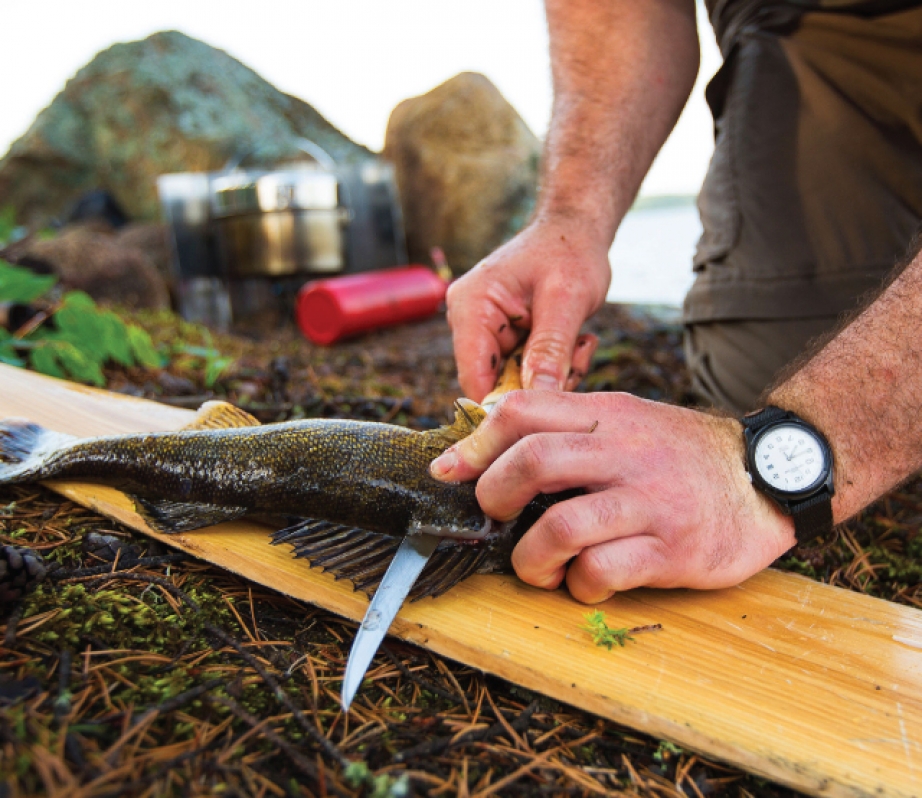There are two ways to clean fish: de-scaled and gutted—bones left in—or filleted—boneless.
Option one is simple. You’ll want to be in an area that can get dirty, as scales will fly in every direction. Hold the fish by its head and use a scaler or knife to remove all the scales. Start by putting the edge of the tool near the tail and scrape towards the head.
Once all the scales have been removed, insert a fillet knife into the anus and slice open the belly up to the base of the head. Then make a cut just behind the gill plate down toward the first incision. If you prefer, you can remove the head completely. Next, spread the body open, scoop out all the innards and spray the cavity out with water. The fish is now ready to be cooked.
If you’re not fond of bones or skin, the second option does the trick. First, wipe the cutting surface and fish down with paper towels to lower the risk of slippage. Make sure your fillet knife is super sharp and then insert it just behind the top of the fish’s skull. You should be able to feel where the skull ends and the body starts. Cut only as deep as the ribcage.
Slide the knife toward the tail, keeping it parallel to the midline of the body and up against the backbone. Avoid puncturing the abdominal cavity where the entrails are encased. Once the blade is past the anus, push the knife all the way through the fish’s belly. Slide the blade the rest of the way to the tail.
Create another incision behind the gill plate toward the top of the head where the initial cut was made. Raise the flap of meat and cut along the curvature of the ribs and abdominal cavity. The meat should peel back until only the skin attaches it. At this point you can simply cut through the skin and detach the fillet.
Finally, separate the meat from the skin. With the scale side down, use a sawing motion as you slide the knife along the full length of the fillet where the flesh meets the skin. Depending on the type of skin, you can start at the tail and hold on to the skin with one hand as you cut away from you with the other. If the skin is too thin and breaks easily, hold the fillet down with one hand and start cutting at the thicker end of the fillet.
Repeat on the other side of the fish. Wash the fillets and pat them dry.
When enjoying the beauty of harvesting a meal in canoe country, remember that fish remnants attract animals. It’s best to prepare your catch away from your campsite. Bon appétit!
Rob Choi is a pro angler from Richmond, Virginia, who finds nothing more satisfying than catching fish from a paddlecraft.




